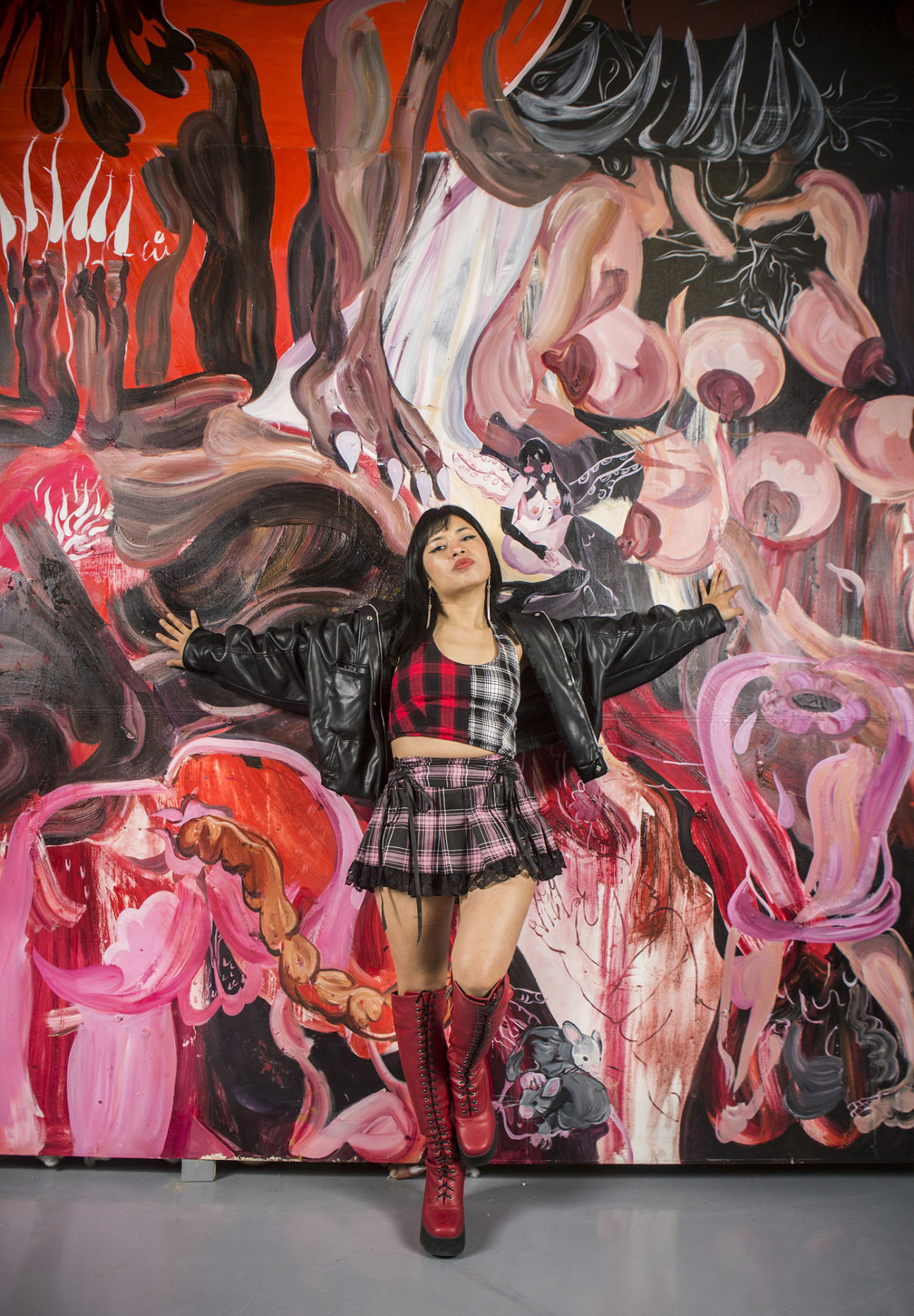
Stigmata, according to the Encyclopedia Britannica, are the “bodily marks, scars, or pains corresponding to those of the crucified Jesus Christ.” These wounds allegedly first made their appearance on one of Catholicism’s more beloved saints, the Italian mystic Saint Francis of Assisi, in 1224. Almost exactly 800 years later, Wynnie Mynerva chose to appropriate another physical emblem of religious lore. The Peruvian artist surgically removed their lowest rib—otherwise known as the Adam’s rib—for their first solo museum exhibition in the United States. Organized by Bernardo Mosqueira, an alum of CULTURED's 2023 Young Curators list, New Museum’s “Wynnie Mynerva: The Original Riot” reimagines the story of Adam and Eve with a 70-foot-long painting—the largest to have ever been displayed at the institution—and a sculptural installation showcasing Mynerva’s bodily relic.
The New York exhibition, which opened to the public yesterday, is not the first time Mynerva has incorporated corporeal modifications into their artistic practice. In 2021, for “Closing to Open” at Madrid’s Ginsberg Gallery, they had their vagina sewn three-quarters of the way shut. The artists sees the traces left by each surgery as “weapons,” symbolic offerings they instrumentalize in their fight against the dictums of capitalism, patriarchy, and organized religion.
With “The Original Riot,” they offer an alternate narrative to Genesis, centering Eve and introducing Lilith, who according to Mesopotamian and Jewish mythologies, was in fact the original woman, sculpted of the same clay as Adam and banished from heaven for refusing to defer to her male counterpart. Read right to left, like the Torah and Quran, the panoramic painting overwhelms the viewer with its orgiastic scenes and lush mosaic of colors. To honor Mynerva’s U.S. debut, the artist sat down with Carlos Motta, Bogotá-born and New York-based artist of the extreme and intimate, to chat about growing up in a violent society, making unsellable work, and masturbating in front of Jesus Christ.
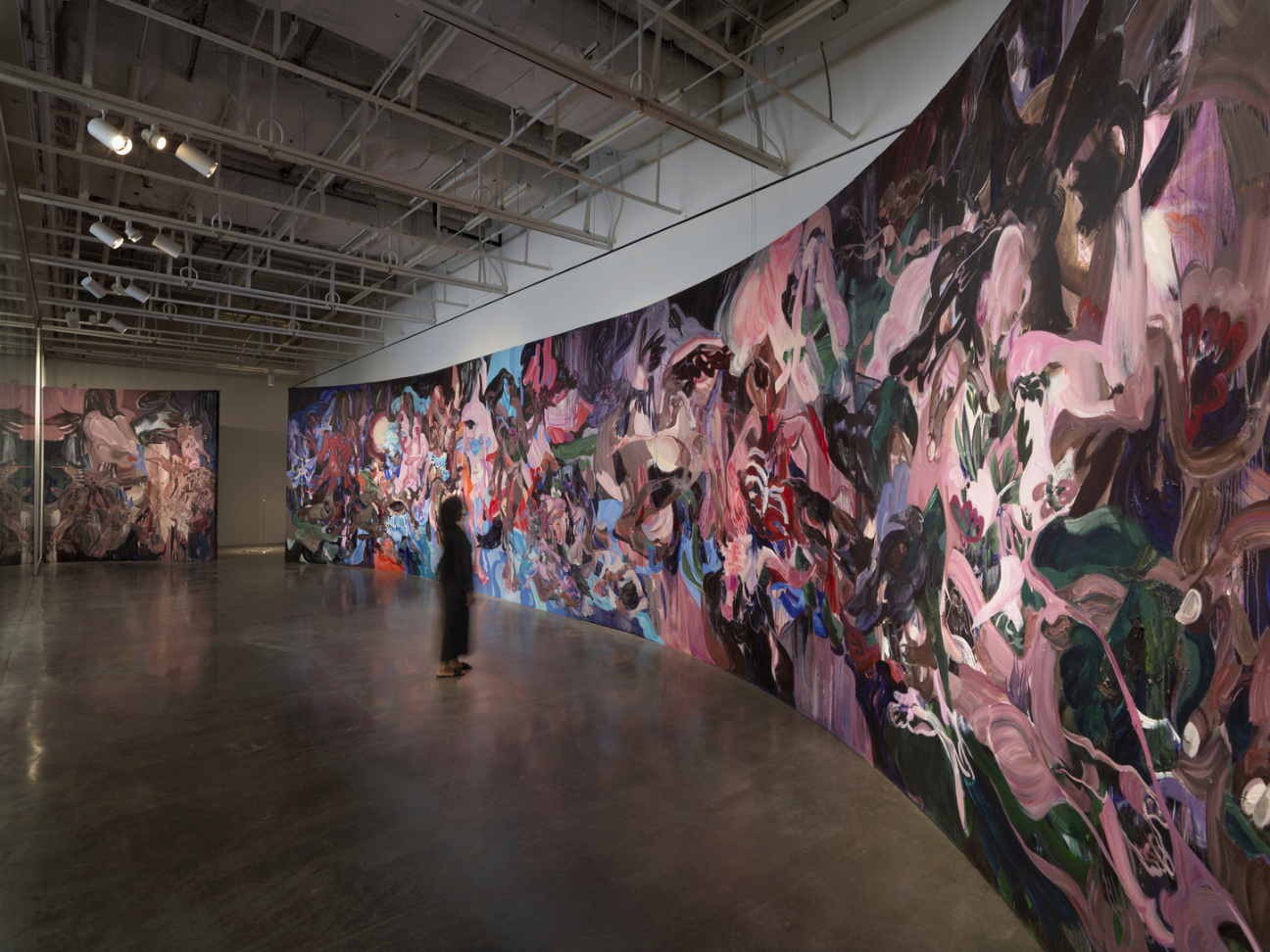
Carlos Motta: I wanted to start off with the topic of religion. What was it like growing up Catholic in Peru?
Wynnie Mynerva: My mother always left space for God at our family dining table. The Catholic depiction of God has always been very present in my home life–the Ten Commandments, praying at home, etc. Peru is a highly conservative country, and religion acts like a gateway for conservative lifestyles. Christians have a rule over decisions made by the state. The archbishop of Lima comes in to talk with the president when any political decision is being made. And these religious figures are part of our own small mythology, and we make decisions according to these characters–the different renditions of Maria, Jesus, God…
Motta: While growing up, did you feel like these figures repressed you, or were they simply a fantasy? In my case, I almost had a fetishized view of Christian imagery.
Mynerva: It was more of a fantasy for me. You find the most pleasure when experimenting with what's forbidden. I used to masturbate, and a picture of Christ would be staring at me—it was right in the middle of my room. I remember my mother telling me, “I'm putting this picture of God here so that he can take care of you,” but then every time I masturbated I thought, He isn't taking care of me, he's looking at me masturbating.
Motta: When did you start thinking that confronting religion critically could nurture your art practice?
Mynerva: I saw religion as a performance—acting and following a script and repeating itself every year. In a way, I got tired of these performances and the whole idea of what my life could be through religion. That's when I started reinterpreting and manipulating these religious images, contaminating them with other information. I also find it interesting how religion has used painting to indoctrinate. Painting is a tool for reproduction that can make an image look solemn with techniques like chiaroscuro in large paintings, used to decorate churches in Latin America. This is something I like to do in my work, too: use elements of painting to generate other ideologies.
Motta: Another part about religious iconography that I always found interesting was the fact that it exalts suffering. We suffer through life in order to be liberated after death. You've used this same idea of suffering by removing one of your ribs, or sewing your vagina closed. Why do you use your body in this sort of subversive way?
Mynerva: I don't think I did it consciously in the beginning, I understood this recently when I would repeatedly pursue projects that required cuts, surgeries, lacerating my body… I grew up in a violent society. I remember how people would be murdered on the streets and left for dead, all cut up, no one tried to help them. Or they would die in gang fights; they would kill each other in front of us. It overwhelms me to think about a future where my body isn't violated. Even here in the U.S., I'm always expecting something bad to happen.
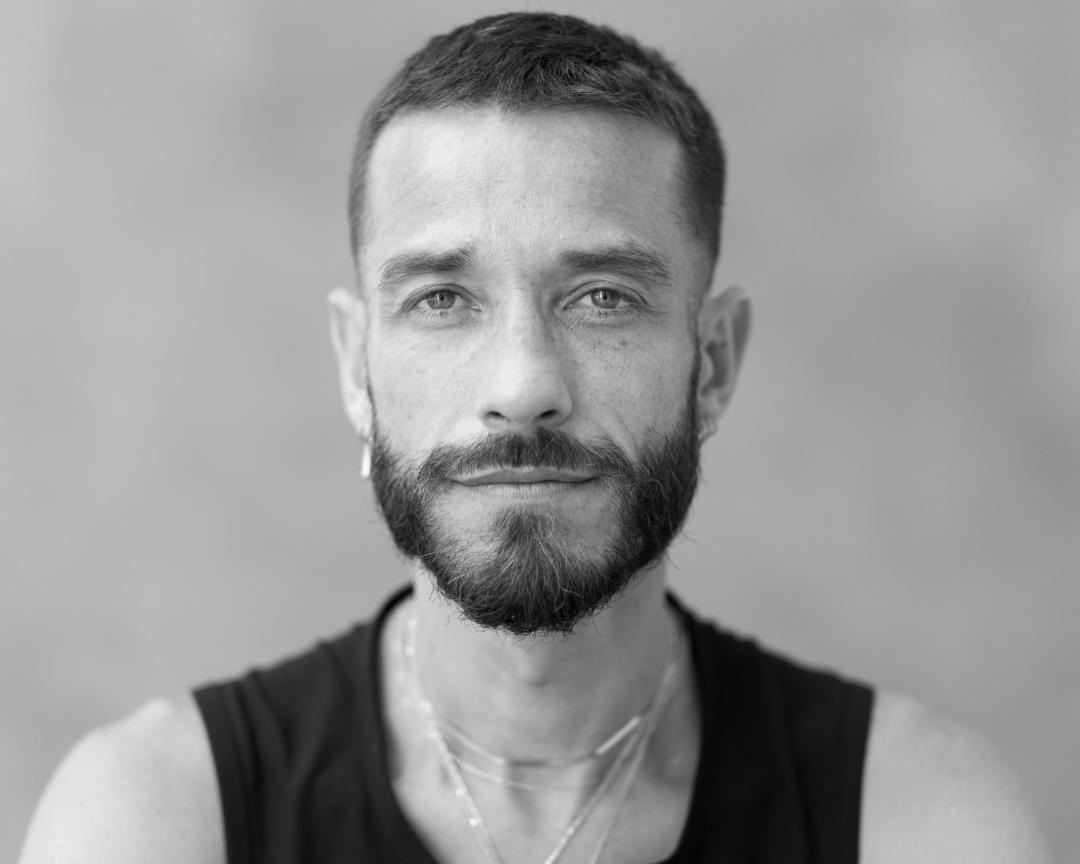
Motta: In Colombia it's common for sicarios, people who are hired to kill, and others engaged in violent work, to find hope in God. They ask God and the Virgin for good luck before murdering someone. "God doesn't see,” he doesn't discriminate according to the social hierarchy, something very prominent in Latin America that in some way acts as a foundation for violence. What role does class and the class-stratified society of Peru play in your work?
Mynerva: My job becomes hard when I don't have the tools to represent a specific class with dignity. I don't think I have them right now. My family didn't have a lot of money when I was growing up. I got a very basic education, and we hardly had enough income to eat. I'm scared that this will be fetishized, because a lot of times I work according to my own experiences … I worked on this project that I have yet to present with my mom, where I sweep the streets because my mother was a housekeeper her whole life. I sweeped the streets during the pandemic for a month, and we thought about experimenting with how our spaces treat us. I’m trying to be careful with this idea because at the end of the day, what are our alternatives to traditional methods as artists? And where do these experiences make sense?
Motta: Your paintings are too big to exist in a space; they try to defy the logic of consumption because owning paintings is historically tied to the higher class. How does it feel to be someone who could potentially sell a lot of paintings?
Mynerva: That's why I think I've developed this strategy to make paintings that are unsellable because of how big they are. It also helps calm my desire to paint. Every artist wants to produce a lot of art because it's our calling. But that can be a problem because you end up with a lot of products that can be sold or even resold in negotiations you're not a part of. So the market ends up eating all your work.
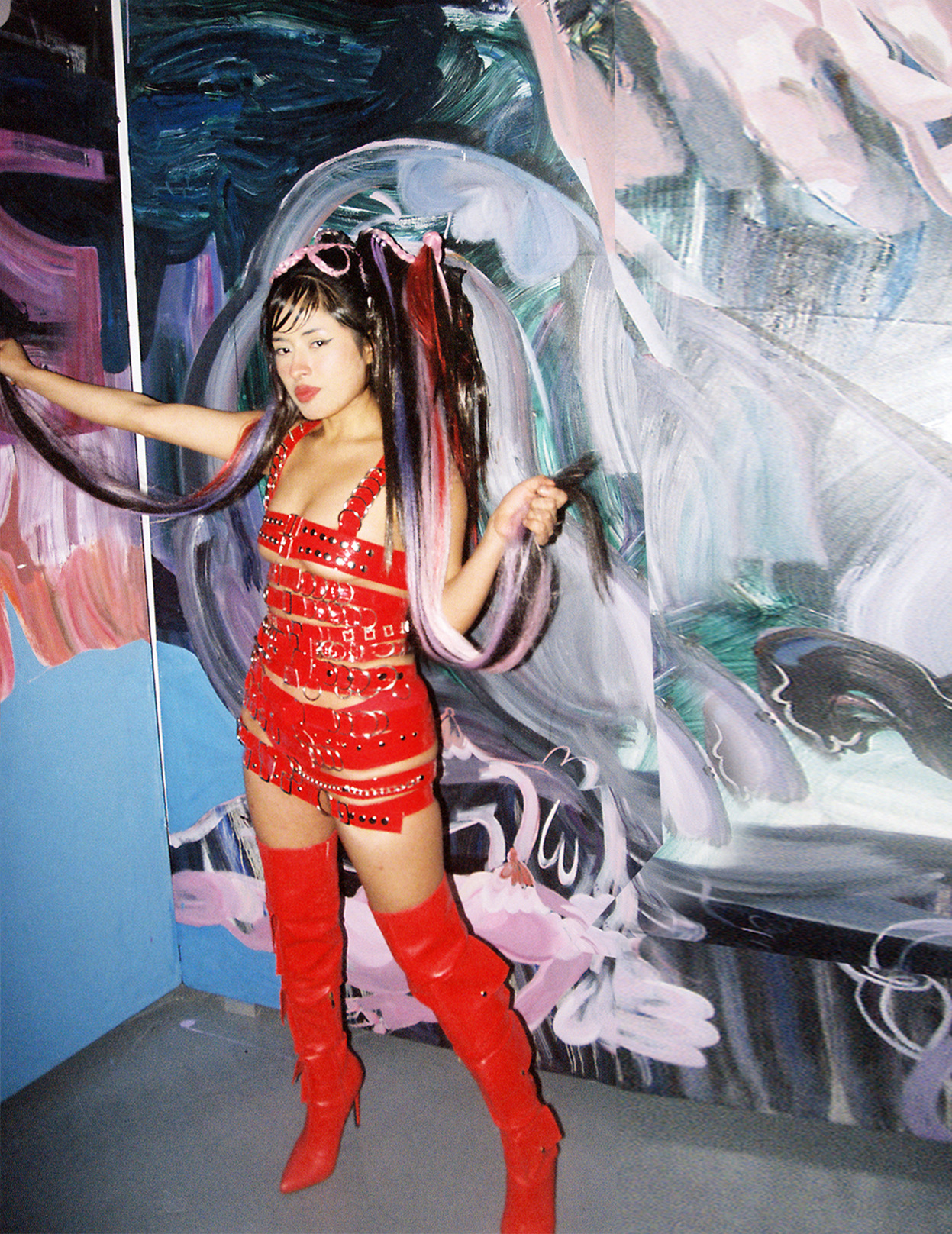
Motta: This is your biggest painting. Can you talk about the painting's dimensions and the reason behind it?
Mynerva: It's 20 meters by four meters. It has a sort of curved structure. For me, paintings are bodies, and that's why the door we see cuts the painting in the middle. The painting is my body. The cut in the middle is how the viewer can access my body. When you go through that door, you'll find my rib. A painting makes people want to come closer. My art is going to be approached and that makes my public bigger, which is what I want. I don't want people to need to know a lot about art or pedagogy to be able to understand my work. My parents can understand this painting. That's how I measure whether it's accessible or not because they, as well as a lot of the people I grew up with, didn't have access to a cultural center or an art gallery or a museum.
Motta: You took out one of your ribs for this exhibition. Tell us about this piece and how it relates to painting.
Mynerva: The piece is really related to the story of Genesis. I’m reimagining the story of Adam and Eve, but focusing on the never-narrated relationship between Eve and Lilith. There are Jewish and Mesopotamian versions of the story that talk about the figure of Lilith, who supposedly precedes Eve as the first woman, created out of the same clay God created Adam with. Adam tried to have sex with Lilith, she didn’t want to be under him, and he raped her. At the moment of the violence, she calls all the names of God asking for help. God comes and punishes her for saying his names out loud. He gives her a vagina in flames, expels her from paradise, and then creates Eve from Adam’s rib to be his subservient, obedient, good wife. Lilith also represents the feminine and that is free, full of sexual desire. She represents a collective wish, in a way.
Eve and Lilith are opposites of each other: one's a saint and the other's a whore. Neither of them will ever satisfy Adam's wishes or the wishes of patriarchy. I created this alternate story that to me seems a lot more realistic where the two first feminine figures meet, share experiences, and organize a rebellion. As a symbol of this rebellion, Eve removes her Adam’s rib and gives it to Lilith. I thought it would only be appropriate if I used my own rib.
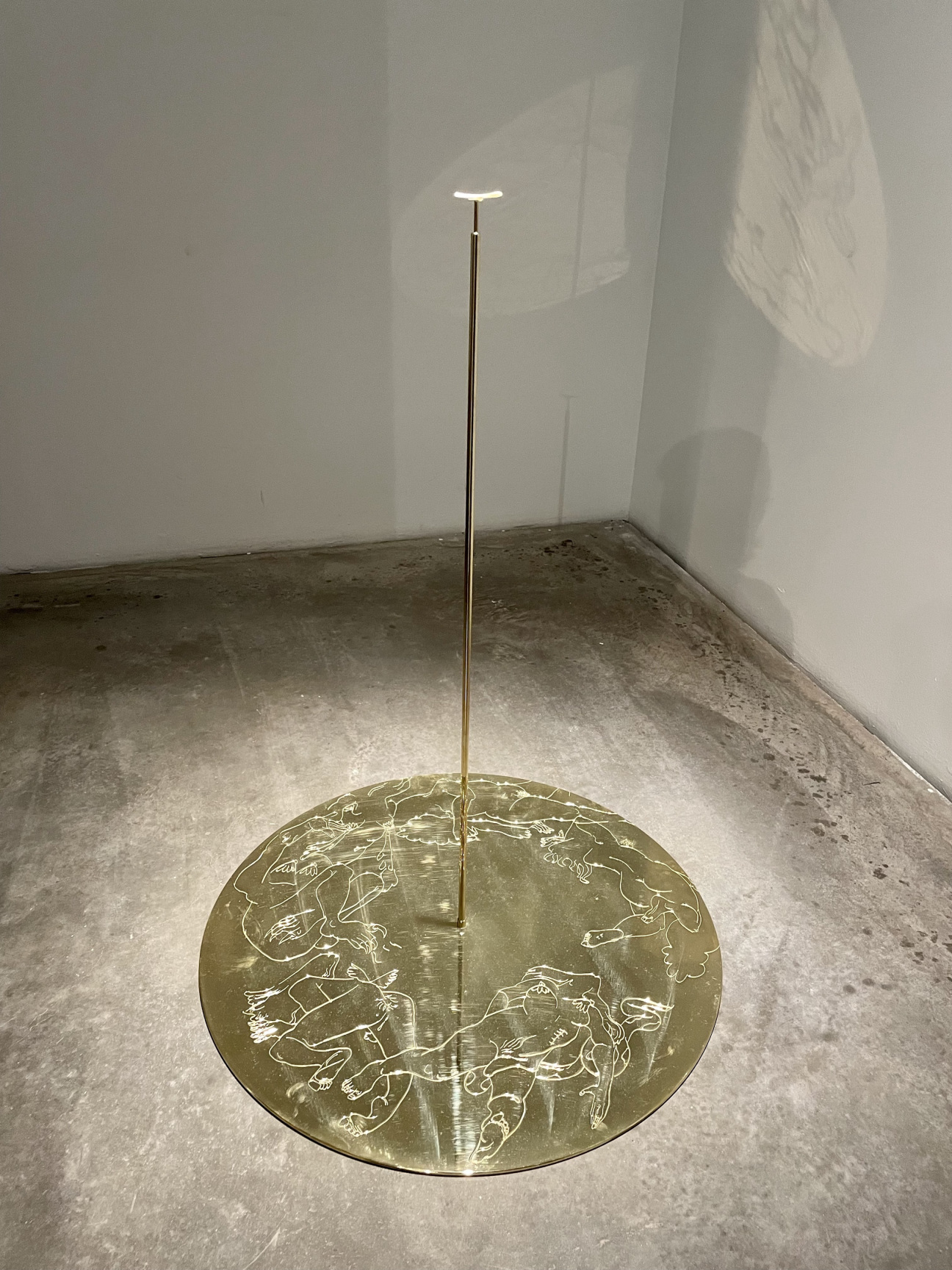
Motta: When you tell me you took out your rib, I felt that pain. And I think the public is also going to feel this pain when they see it.
Mynerva: The public should know that this isn't a theoretical or aesthetic tool. It's a weapon, a strategy that I offer to people and that I believe in. This wasn't a surgery that some artist paid a doctor lots of money to perform; it's a surgery that is actually often done for cosmetic purposes and that now is done for artistic purposes. It's like a tattoo!
Motta: How do you relate this to the piece about your vagina in "Closing to Open," 2021, especially now that you “finished” the piece?
Mynerva: The surgery for closing my vagina has been quite beneficial. I was a person that felt violated every time I had sex, because I didn't want to have vaginal sex but people didn't bother to ask what I really wanted. By closing it I created this act of resistance. It doesn't have to do exclusively with a work of art as something separated from life, it has more to do with the fact that I took this personal decision to stop reliving an experience I found catastrophic. It's me trying to find my body again. I love theory, but there's something powerful about something you can touch and feel, that bleeds and sweats.
"The Original Riot" is on view through September 17, 2023 at the New Museum in New York.




